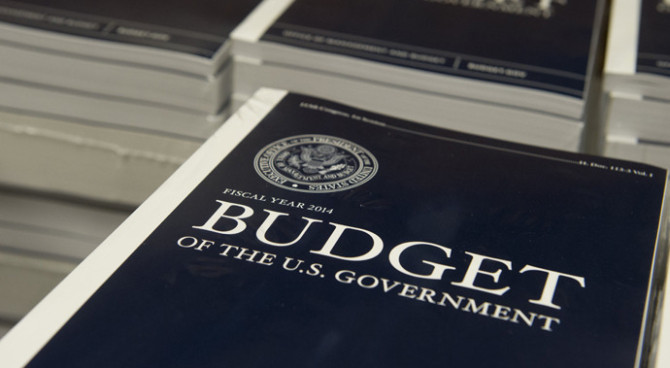How these two presidents responded to a deep recession reveals polar extremes in policy. And in results.
Only twice since World War II has the U.S. unemployment rate reached 10%: It was 10.8% in 1982 and 10% in 2009. The different responses of Presidents Ronald Reagan and Barack Obama—Reagan lowering taxes and lifting regulatory and other barriers to economic growth, Mr. Obama increasing the size and reach of the government—represent polar extremes in policy. And in results.
Fifty-five months after the recession started in July 1981, the Reagan recovery had created 7.8 million more jobs than when the recession started, and real per capita gross domestic product was up by $3,091. Fifty-five months after the recession that began in December 2007, there were four million fewer Americans working than when the recession started, and real per capita GDP was down $803.
The trajectory of household income is even more telling. According to Sentier Research analysis of monthly U.S. Census data, during the current recovery American households have lost more income than they lost during the recession. In December 2007, real median household income was $54,916. It had fallen to $53,508 when the recession ended 18 months later. But by June 2012, real median family income had fallen to $50,964.
During the Reagan recovery from 1981 to 1986, real median household income on an annualized basis rose by $3,380 or 7.7%.
There are other, deeply troubling differences between the Reagan and Obama recoveries.
In July, most Americans were shocked to discover that 246,000 new people had qualified for disability benefits during the previous three months, while only 225,000 people had found new jobs. A total of 471,000 Americans left the unemployment rolls—but the difference between qualifying for disability benefits and getting a job is profound for the economy and for the people involved. Fifty-five months after the 1981 recession began, the number of Americans drawing disability benefits had actually dropped by 655,000—or 14.3%.
The explosion of disability payments is only the tip of the iceberg. Fifty-five months after the 1981 recession began, the number of people on food stamps had fallen by three million, or 13.4%. The number of food-stamp recipients since the recession that began in December 2007 has grown to more than 46 million, from 26 million—a mind-boggling 71% increase.
While part of this growth is attributable to the failed recovery, a significant amount has been created by the administration’s effort to expand the food-stamp rolls. In a pamphlet on its website, the U.S. Department of Agriculture recommends that its employees provide “games, food and entertainment. . . . [P]utting SNAP [food stamp] information in a game format like bingo, crossword puzzles, or even a ‘true/false’ quiz . . . helps get your message across.” The department is now trying to turn food stamps into an economic development program, asserting on its website that $1.00 in new food stamps generates $1.92 in “new economic activity.”
The number of beneficiaries of the Aid to Families With Dependent Children program had declined by 1%, or 42,000 people, 55 months after the Reagan recession began. During the Obama recovery, the number of beneficiaries in AFDC’s successor program, the Temporary Assistance to Needy Families program, has increased by 467,000, or 12%. This number can be expected to grow dramatically as a result of the administration’s recent decision to waive work requirements for these welfare recipients.
Fifty-five months into the Reagan recovery, the number of Americans drawing unemployment insurance had dropped by 357,000, or 11.9%. Today there are 500,000 more Americans drawing unemployment insurance than when the 2007 recession started, an increase of 19.2%. Historical data and Congressional Budget Office projections for 2012 also indicate that in the Reagan recovery, Medicaid enrollment grew by 535,000, or 2.4%. In the Obama recovery, Medicaid enrollment has grown by more than 11 million, or 19.7%.
In summary, the Obama administration not only has failed to bring back the American economy, it has ushered in a frightening growth in dependence. A review of the data from the 126 programs that today make up America’s $1 trillion welfare system shows the same basic pattern over and over again. Expenditures on means-tested welfare programs have grown 2.5 times faster during the Obama administration than in any similar time period in American history. In those welfare programs that existed during the Reagan era, the recovery resulted in either a decline in beneficiaries or a slower rate of growth. These same programs have ballooned during this administration.
When Americans voted for Barack Obama in 2008, they knew or should have known that they were choosing a bigger federal government, higher taxes and an expansion in the role that government would play in their lives and businesses. They voted for it and they got it.
But Americans were not voting for economic stagnation, an explosion of entitlements and a doubling of the national debt. Unfortunately these things go hand-in-hand. As the European experience demonstrates, the cost of big government is not just higher taxes; it’s lower growth, greater dependency and fiscal crisis.
Mr. Gramm, a former Republican senator from Texas, is senior partner of US Policy Metrics.


